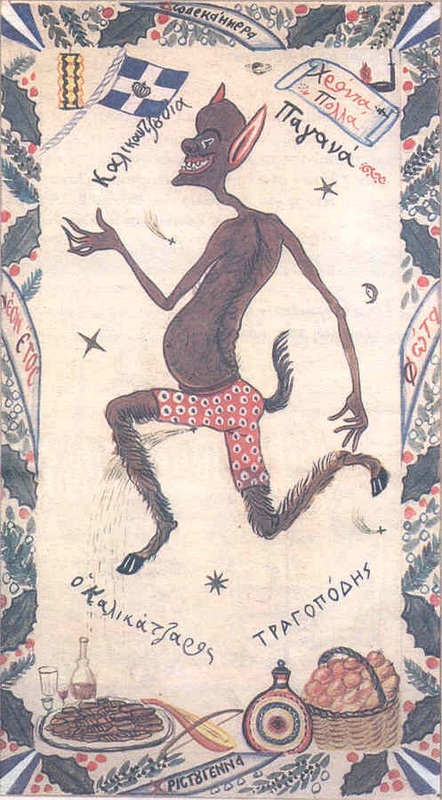Melomakarono (μελομακάρονο) is the most beloved Christmas treat, originating in the syruped cookie named foenikion (φοινίκιον) that Greek refugees from Asia Minor brought home in the early 1920s. I wouldn't go so far as to suggest that foenikion had something to do with the Phoenicians, who lived during Antiquity in what is today called the Middle East. However, it's common knowledge, although not so common to everyday people, that melomakarono has its roots in medieval funeral rites. Namely, the individual cakes (macaroniae/μακαρωνίαι) offered to people who attended were dipped in honey at some point, whether by accident or not.
The popular cookie recipe is more or less the same all over Greece, dividing people into two categories based on how much syrup they like on their cookies. Unlike kourabiedes (κουραμπιέδες), the other favorite Christmas treat, melomakarona can be eaten on fasting days because they are made without butter or eggs. A variation of the cookie is triangular, stuffed with ground walnuts and decorated with a pattern that able housewives from Asia Minor created on the dough, using a hair pin.


MELOMAKARONA
This version is adapted from Greek Pastries & Desserts (1994) by Vefa Alexiadou in the following ways: a) vegetable oil + shortening have been replaced with extra-virgin olive oil and b) a quarter of the flour has been replaced with finely ground semolina. The first change is essential for me because olive oil is the healthiest option. The second change is optional, resulting in a texture I particularly like - that of sand cakes. It also means that syrup is partly absorbed, yielding melomakarona that are lighter on the stomach. Both this and the version with only flour result in more syruped cookies than most people around me like. This is because of the technique I use even when part of the flour is replaced by semolina. I have a theory, regarding syrup desserts: if you can't have them, just don't eat them. Melomakarona also come in bite-sized pieces (a recent trend) so people who diet or lack a sweet tooth or just foreign people, who are not used to or don't care for overly sweet desserts, may enjoy them without problems.
I n g r e d i e n t s
(makes 40-50 pieces)
2 cups extra-virgin olive oil
1 cup caster sugar
3/4 cup fresh orange juice
1/4 cup brandy
1tbsp grated orange zest
2tsp baking powder
1tsp baking soda
6 cups plain flour
2 cups finely ground semolina
for the syrup:
2 cups honey
2 cups caster sugar
2 cups water
for garnish:
1 1/2 cups ground walnuts
1tsp ground cinnamon
1/2tsp ground cloves
M e t h o d
1. Preheat the oven to 175oC. Line two baking sheets with parchment paper. 2. Whisk the liquid ingredients in a bowl. Sift the dry ingredients in another. Combine the mixtures, using a spoon. Knead gently into a soft paste. Shape with cookie cutters or, better yet, into ovals with your hands. Mark diagonally, both ways, using a fork. 3. Place on the baking sheets and bake until golden, about 30 minutes. Meanwhile, boil the syrup ingredients for 5 minutes. 4. Remove the foam and pour over the baked cookies immediately. Alternatively, dip each cookie in the pot of syrup, then place it on a tray upside down and repeat with all the cookies. Pour any leftover syrup over the cookies and leave for several hours. (This is the method that I use.) 5. Garnish each cookie with a spoonful of ground walnuts mixed with cinnamon and cloves. 6. Store in a lidded box or under cling film.
N o t e
Most recipe authors insist on a difference of temperature between the syrup and the cookies. While this may be true, I've noticed that hot syrup works best if poured over something that is warm rather than cold. This is more or less what is suggested by Vefa Alexiadou and she was a food chemist.

Comments